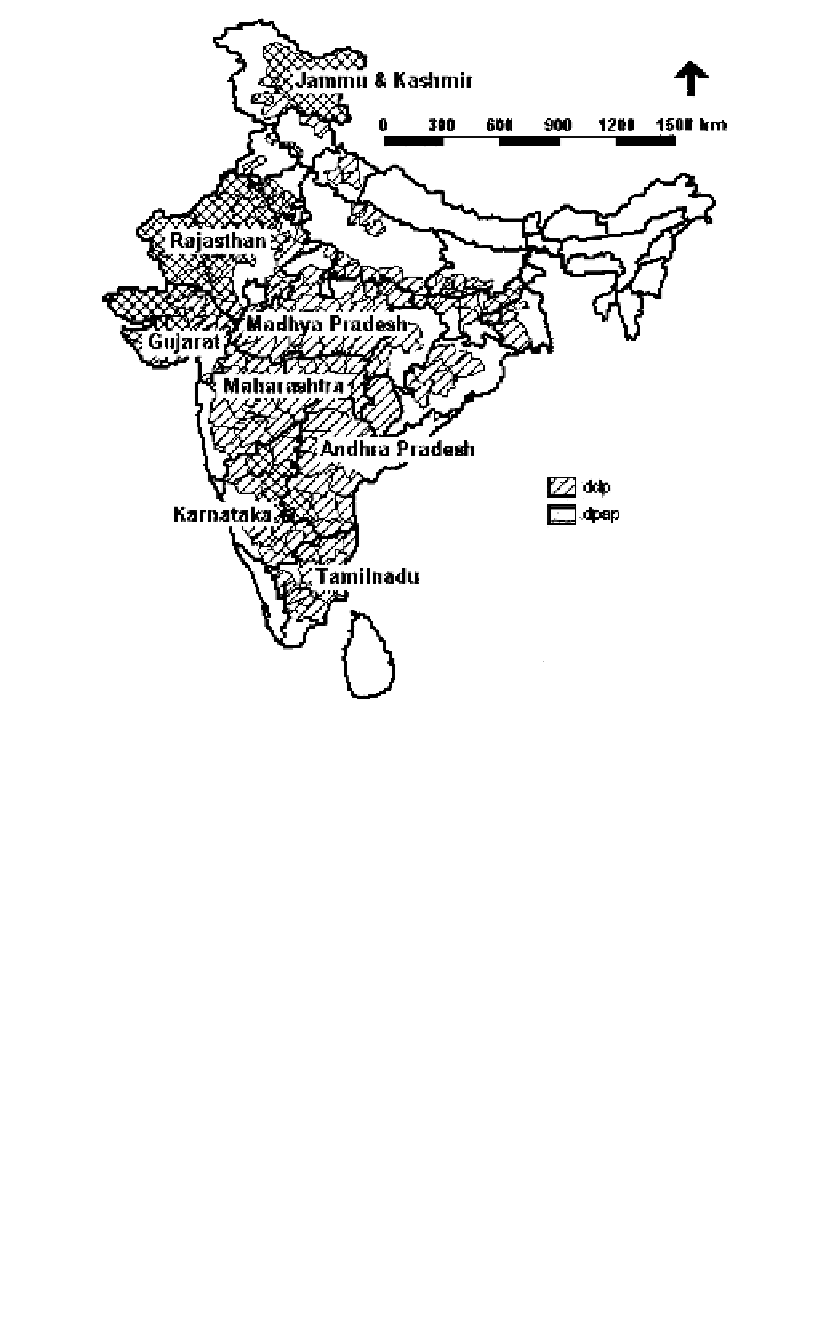Agriculture Reference
In-Depth Information
1
2
3
4
5
6
7
8
9
10
11
12
13
14
15
16
17
18
19
20
21
22
23
24
25
26
27
28
29
30
31
32
33
34
35
36
37
38
39
40
41
42
43
44
45
46
[298
Line
——
0.9
——
Norm
PgEn
[298
Fig
ure 23.1
Drought-prone districts in India as identified under the Desert Development
Program (DDP) and the Drought-Prone Areas Program (DPAP).
Im
pacts of Droughts
The main food crops affected by drought are rice, wheat, pearl millet,
sorghum, and pegion pea that are grown during southwest monsoon season
under rain-fed conditions. Legumes and pulses, which are short-duration
crops, are less affected. Persistent droughts cause crop failures and lead
to acute shortage of food, fodder, and water (for drinking or irrigation),
affecting human and livestock health. During drought years, people and
livestock in the arid parts of Rajasthan migrate to neighboring states in
search of food, fodder, drinking water, and employment (figure 23.2).
Droughts that occurred in India in 1967, 1968, 1969, 1972, 1974, 1979,
and 1987 (Ministry of Agriculture, 1988) had considerable impact on food
grains production (figure 23.3). For example, the drought of 1966-67
reduced overall food grains production by 19%, and the loss in production
of rice and other pulses was 30% in 1965-66, 66% in 1966-67, and 86%











































Search WWH ::

Custom Search